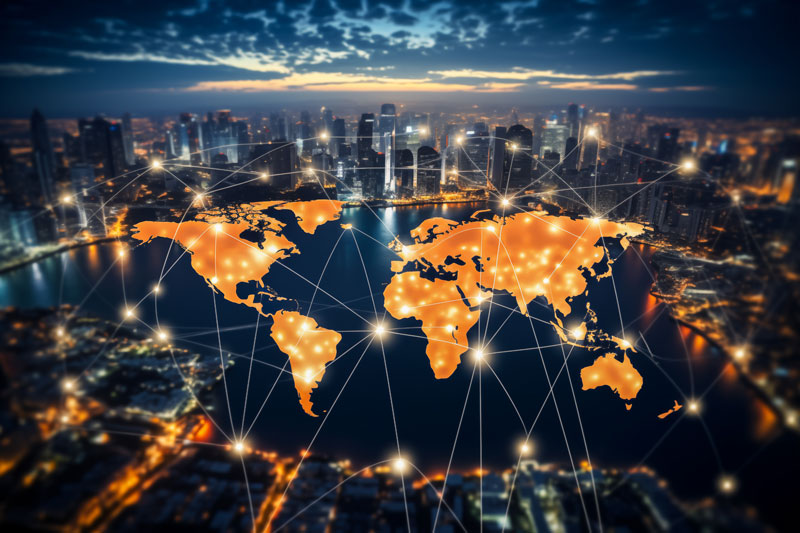Artificial intelligence, once the stuff of science fiction, is now so embedded in our lives that we often do not notice it. We are alternately grateful for and aggrieved by autocorrect on our phones. We take it for granted when Facebook tags our photos, Amazon recommends books, and detection algorithms help read our mammograms. Yet Gartner predicts there is much more AI to come. In its recent report, 100 Data and Analytics Predictions Through 2022, Gartner posits, “The introduction of artificial intelligence across all types of business functions in all industries will accelerate and broaden. It will manifest itself in many if not most daily tasks from personal to professional, yet result in net job gains.”1
That last part intrigues me, the notion that AI will create, not eliminate, jobs while becoming more enmeshed in our personal and professional lives. My theory? It’s because artificial intelligence greatly complements but cannot replace human intuition. AI and gut feelings – like bacon and eggs, they are better together. Here are three organizations using AI in 2018 to enhance human intuition, improving profits and lives.
Customized coffee experiences
The next time you get your caffeine fix, you might pause for a moment to appreciate all the ways big data and artificial intelligence are shaping your Starbucks experience. An estimated 90 million transactions per week give the company 90 million opportunities to collect and leverage data. More than 15 million people allow Starbucks to gather even more detailed data about their coffee habits through its rewards program and mobile app, though which customers order and pay via their phones. This data, in turn, allows the company to focus on personalization, creating a “just-for-you” customer experience. AI underpins the app’s recommendations of new food and drink items based on past purchases, geography, and weather, in addition to special offers sent at just the right time. All this complements Starbucks’ human-based customer engagement and retention efforts, including the barista who knows your name and favorite drink.
Detecting fashion trends
Like the world’s largest coffee chain, the world’s largest clothing brand is turning to artificial intelligence to create customized retail experiences. H&M employs 200 data scientists, analysts, and engineers to detect trends, better align supply and demand, and fine-tune what items are available in its 4,000+ stores, according to The Wall Street Journal. The company uses machine learning and natural language processing to analyze blog posts, search terms, social media, and other sources in a quest to detect trends up to eight months in advance. H&M’s designers also rely on their fashion instincts, but this quantitative analysis helps them spot the next big thing.
At the store level, H&M has begun using algorithms to analyze receipts, returns, loyalty-card data, and purchasing patterns for individual locations. The goal is to use this granular data to customize the merchandise available in each store – a big change from H&M’s long-standing practice of stocking all stores with similar items. The company reports improved sales at one Stockholm store that adjusted its stock and now is rolling out the program globally.
Triaging crisis calls
Other enterprises are embracing AI to better help people during times of crisis. Crisis Text Line is a non-profit that provides free, 24/7 support with volunteers responding to texts about depression, suicide, bullying, and relationship problems, among others. While every text is read and handled by a human, the organization relies heavily on data to provide help faster and more accurately. Crisis Text Line uses machine learning and natural language processing to scour the texts it receives – more than 65 million and climbing. The system identifies high-risk words and word combinations and then bumps those texters to the front of the queue. The organization explains:
Our machine learning layer identifies 86% of people at severe imminent risk for suicide in their first conversations. The model, an ensemble of deep neural networks, learned to predict risk of suicide from all conversations tagged with “Suicide” by Crisis Counselors in a survey taken post-conversations. The interplay of model predictions and real-time feedback loop from Crisis Counselors is instrumental in retraining the model. We’re now positioned to service 94% of high risk texters in under 5 minutes.
Crisis Text Line predicts that as the algorithm’s accuracy increases, it will decrease the wait times for people at the highest-risk, especially during the busiest overnight hours. In addition, the current machine learning layer only reads the opening messages, but an improved model will be able to detect and adjust risk during the course of a conversation. Crisis Text Line expects machine learning eventually will detect suicide risk 5-10 minutes faster than a human crisis counselor could on her own.
Analytics at its best
As Gartner observes, “the digital business future confronts organizations with almost unlimited possibilities to create business value through data and analytics.”1 These are just three examples of organizations harnessing billions of inputs to better serve their customers and clients. Starbucks and H&M use AI to create personalized customers experiences while AI connects Crisis Text Line’s volunteers to people in crisis faster than ever. In each case, AI does not replace the human touch. Rather, it enhances it. That’s data analytics at its very best: combining computing power with human intellect and instincts to yield the best possible decision.
Sources
1 Gartner, 100 Data and Analytics Predictions Through 2022, May 21, 2018.
“H&M Ramps Up Data Use,” by Saabira Chaudhuri, The Wall Street Journal, May 8, 2018.
- Survey Says: Healthcare CIOs Don’t Fully Trust Their Data - November 8, 2018
- Microhospitals: How a New Healthcare Model Leverages Business Intelligence - September 25, 2018
- How New Database Technology Fuels Oil Company’s Analytics - September 20, 2018



